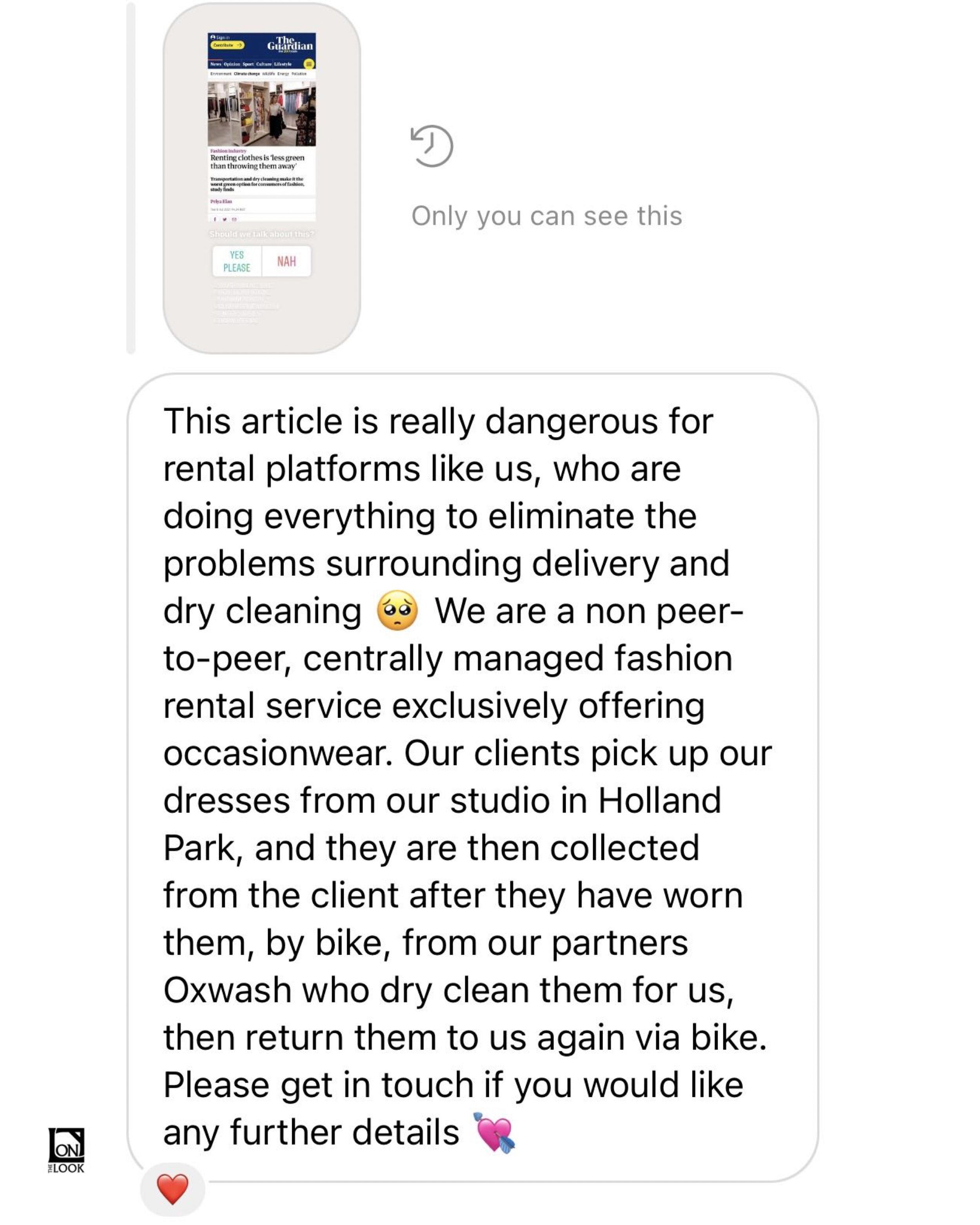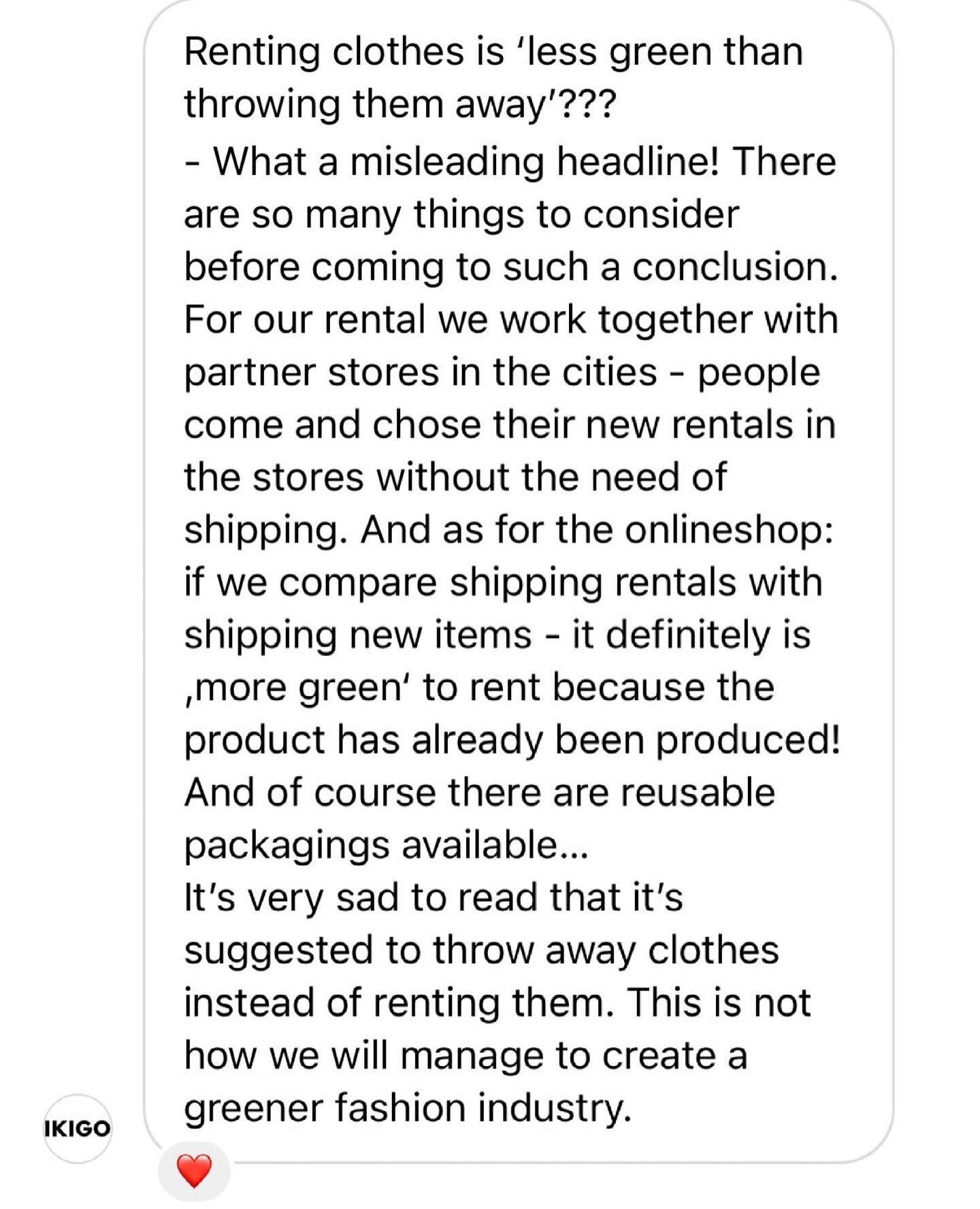The Guardian recently published an article stating that “Renting clothes is less green than throwing them away”. The article is based on a study by IOP science which came to multiple conclusions, one of which ranked Rental as the most GWP (Global Warming Potential) in comparison to “BASE, REDUCE, REUSE, RECYCLE or SHARE” (key below). The comparison is taken from the example product of a pair of JEANS which is worn 200 times before they are discarded (BASE), recycled, reused, rented… etc. The real conclusion of the study is NOT that renting is the most environmentally unfriendly. Renting CAN, of these options, have the most Global Warming Potential DEPENDING on how it is practiced.
WHAT THE GUARDIAN SHOULD BE POINTING OUT
COMMUNITY THOUGHTS
KEY
BASE: current practice in which a user buys a new pair of jeans and, after a certain use period of traditional ownership, disposes them to a waste-to-energy facility.
REDUCE: scenario in which the user extends the time they use a purchased pair of jeans. In this scenario, environmental benefits are assumed to follow from avoidance of primary manufacturing of a product.
REUSE: a used pair of jeans is sold in a secondhand shop for a new user. Through slowing the consumption cycle, this type of ownership chaining is assumed to produce environmental benefits by reduction of primary manufacturing of a product.
RECYCLE: used jeans are industrially transformed into new textile materials, which can be used to create new products. In this scenario, environmental benefits are assumed to follow from decreased use of primary raw materials (in this case, cotton).
SHARE: the same pair of jeans is leased or rented to multiple users during the product lifecycle. This scenario resembles the logic of collaborative consumption, in which environmental benefits are assumed to follow from increasing the utility rate of a product.
NOTE: I’m not here to get upset about the use of the word green to suggest sustainable… But… Green is a color, not a sustainability measurement.
















